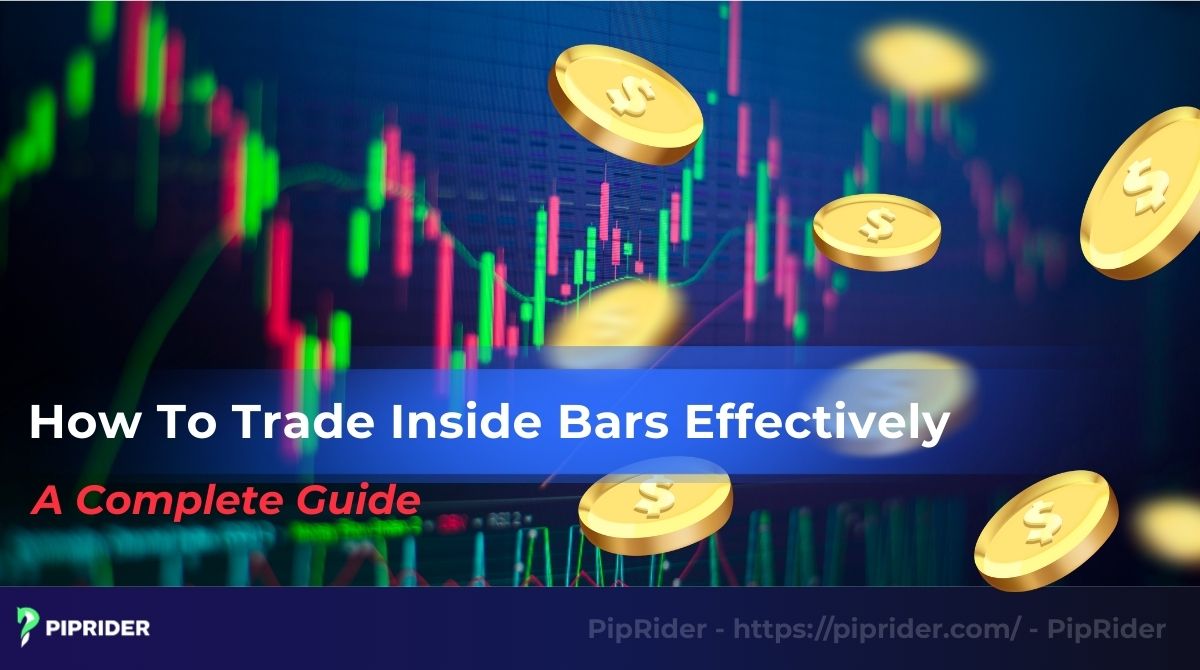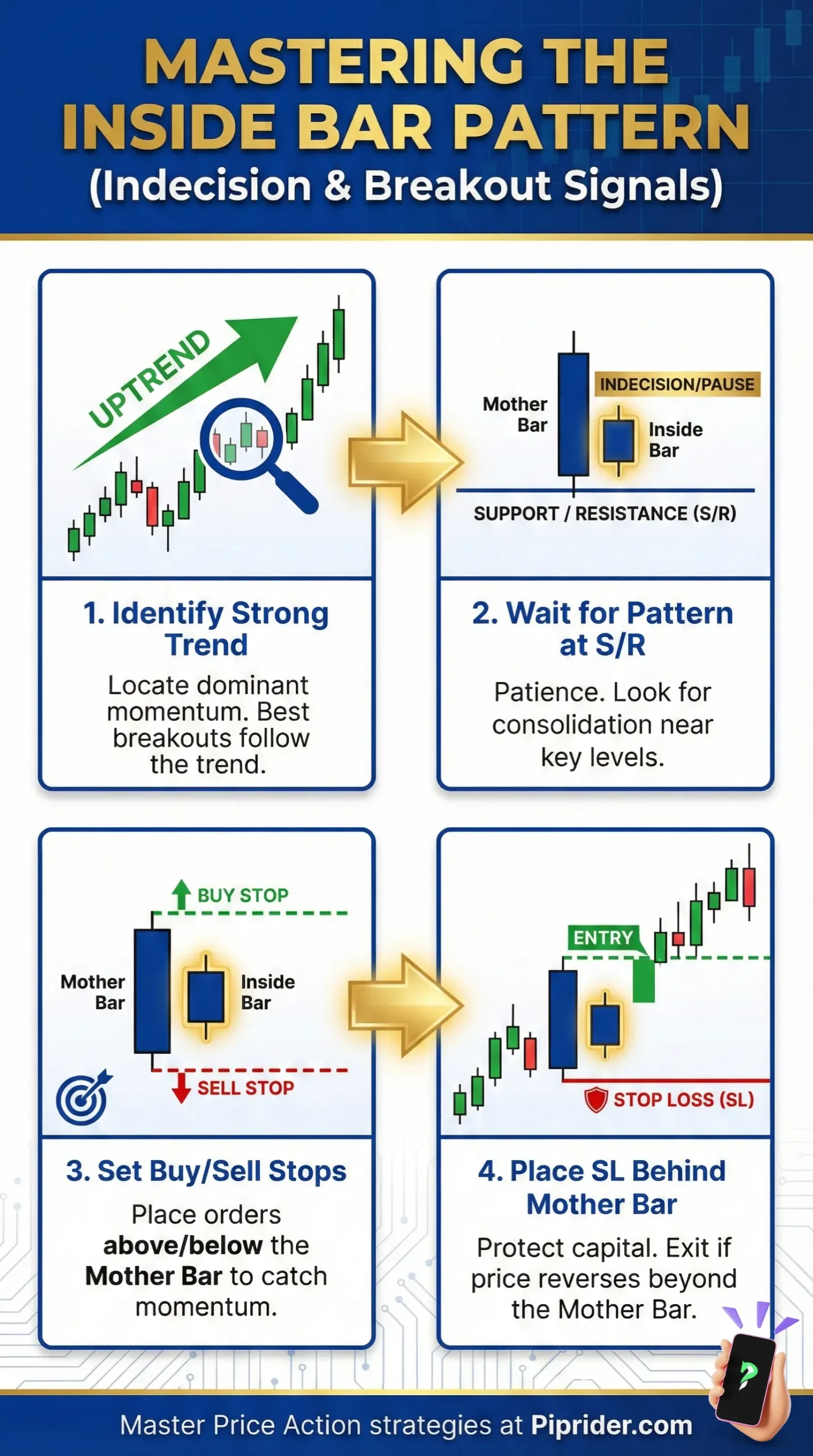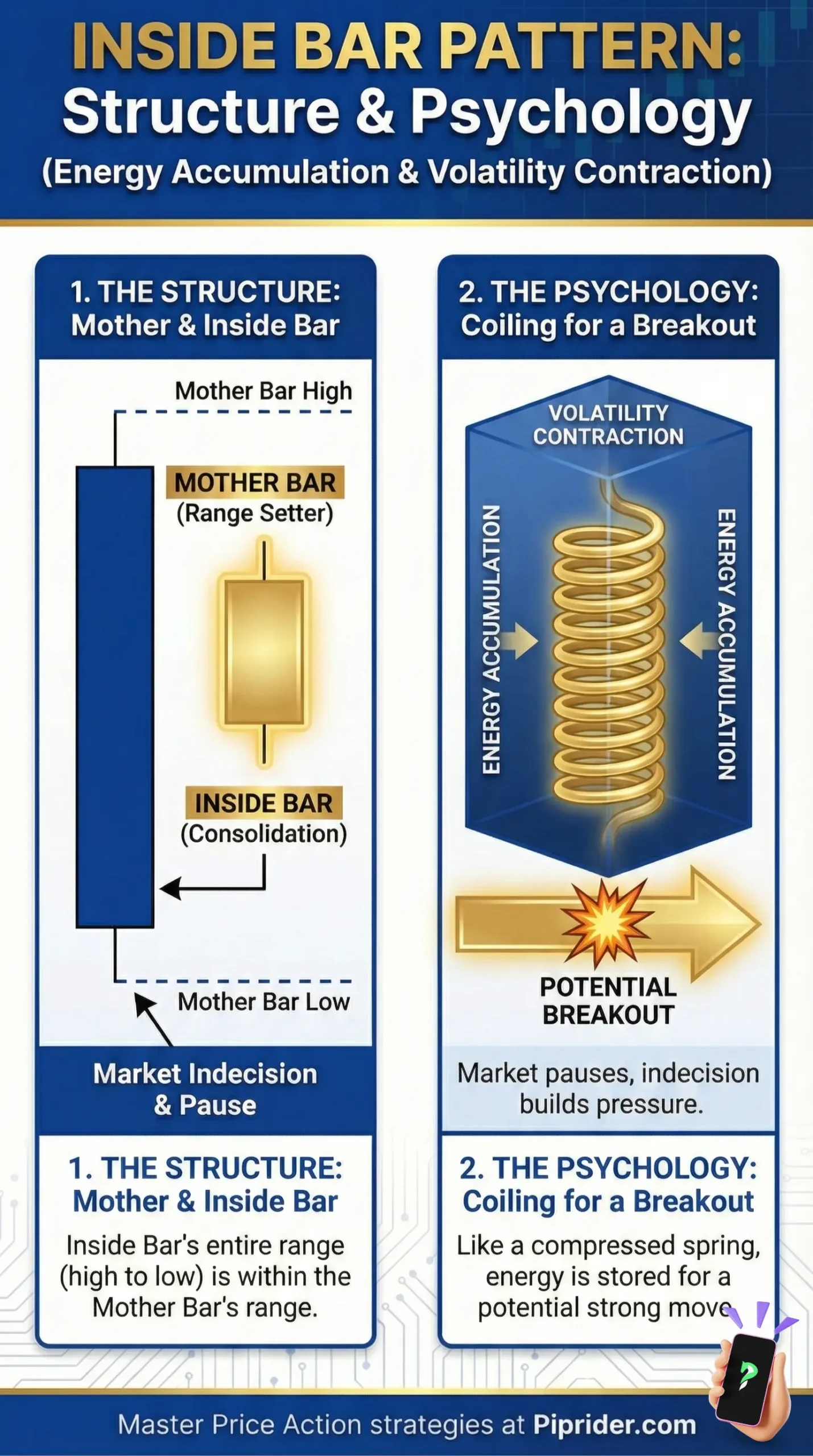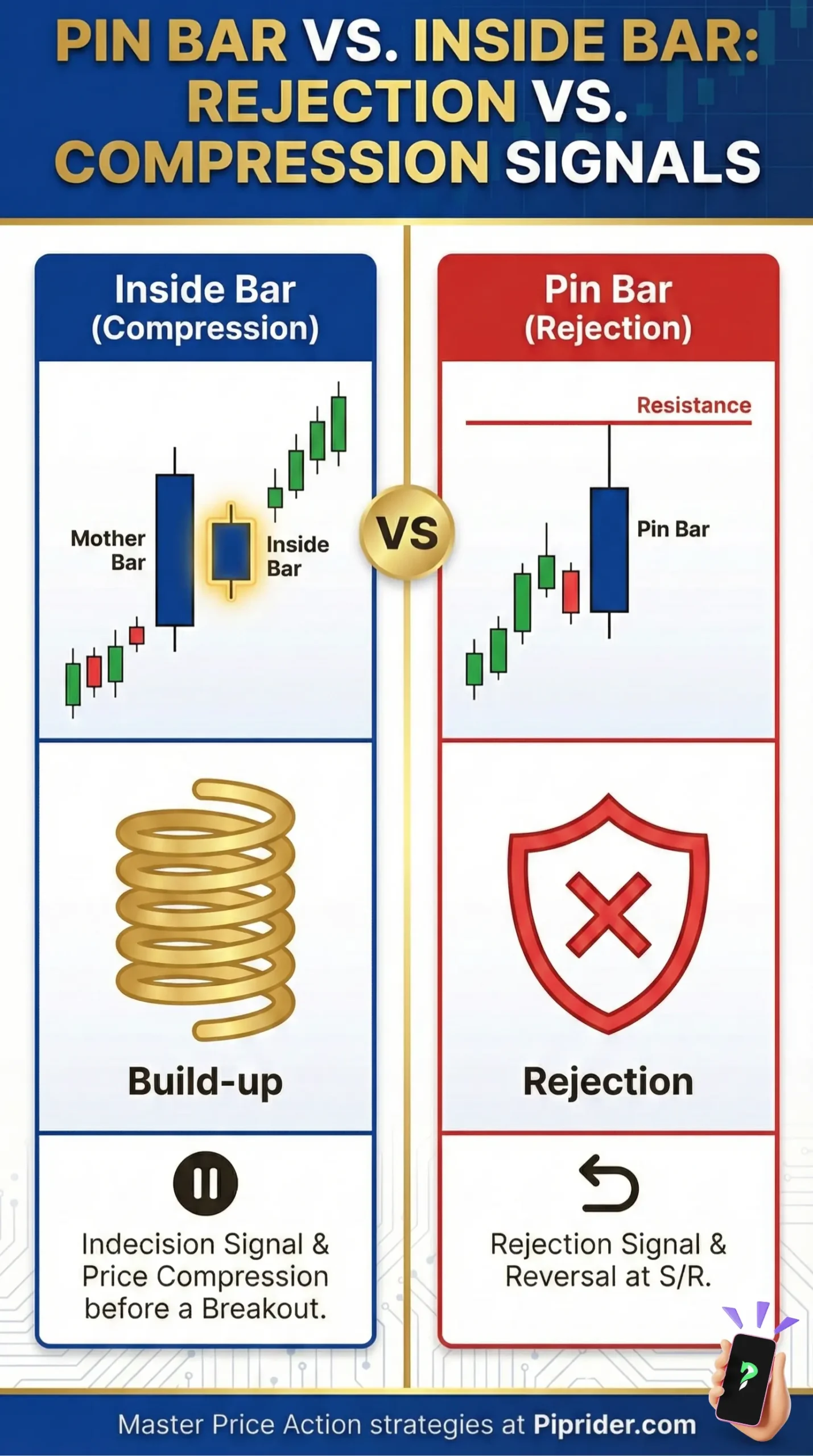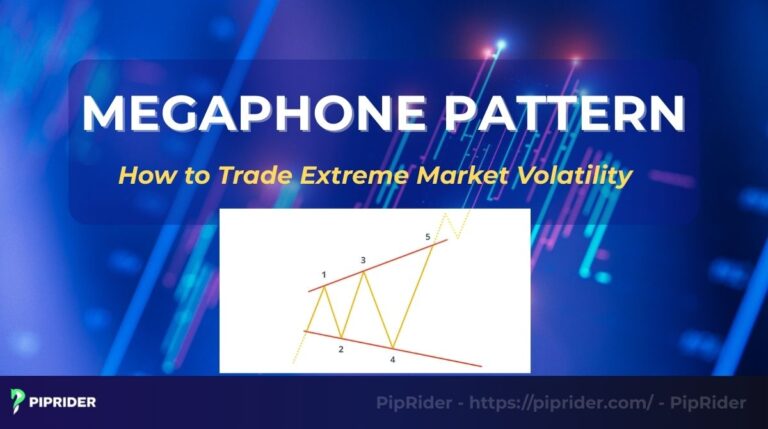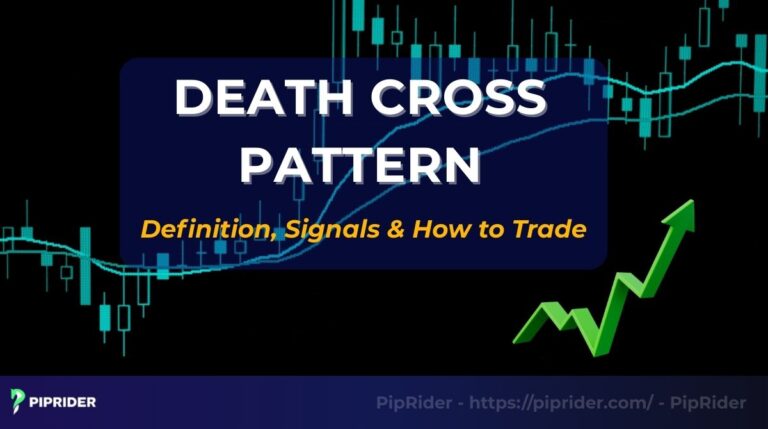Ever watched a market go quiet and felt the tension building, knowing a big move was imminent? That quiet period is often visualized on the chart as inside bars. In trading, this pattern is a powerful signal of indecision and a potential precursor to an explosive break. This guide will teach you how to identify this pattern, understand its variations, and use it to build an effective trading technique.
Key Takeaways
- What this pattern is and why it’s a crucial signal in trading.
- Common variations, including the bullish, bearish, and the false break (Fakey).
- How to correctly identify a valid setup, including the “mother bar” and key structural rules.
- Effective entry and exit strategies for both day trading and swing trading.
- Common mistakes to avoid and practical tips for improving your trading with this pattern.
1. What Is an Inside Bar in Trading?
An inside bar is a two-candle price action pattern where a smaller candle, the “Inside Bar”, forms entirely within the high-to-low range of the preceding, larger candle, known as the “Mother Bar.”
This inside bar candlestick pattern signals a period of consolidation and contracting volatility. It visually represents a pause or indecision in the market, often indicating that energy is building for a potential breakout.

The meaning of this pattern becomes clearer when compared to its opposite:
- Inside Bar: Represents a contraction in volatility. The market is in a tight range and signals a potential break is coming.
- Outside Bar (or Engulfing Bar): Represents an expansion in volatility. The second candle completely “engulfs” the previous one, signaling a strong, decisive move has already begun.
1.1. Market Psychology
The psychology behind an inside bar pattern is a story of indecision and balance. The “Mother Bar” represents a period of strong directional movement. The following “Inside Bar,” which is smaller and contained, shows that the initial momentum has paused.
Ideally, this mother bar should be a decisive trend candle, such as a marubozu candlestick pattern. This strong directional push followed by a sudden halt (the inside bar) creates the perfect tension needed for an explosive continuation move.
This pause signifies a temporary equilibrium where neither buyers nor sellers are strong enough to push the price beyond the previous period’s top or bottom. It’s a “calm before the storm,” indicating that energy is building for the next significant price move – often a decisive break in patterns like the cup and handle bar formation.
This contraction of volatility is distinct from the wild indecision seen in a long legged doji candlestick pattern. While the Doji shows a violent struggle ending in a draw, the Inside Bar shows a quiet agreement to pause trading within a known range.
1.2. Why Inside Bars Are Popular Among Price Action Traders
These patterns are a favorite among traders for several key reasons:
- They provide a clear and defined risk level. The high and low of the Mother Bar create an obvious and logical area to place a stop-loss.
- They offer a favorable risk-to-reward ratio. Because the pattern represents a period of low volatility, it often allows for a tight stop-loss relative to the potential profit from the subsequent break.
- They are versatile. A pattern can signal both a trend continuation (when formed during a pullback) and a potential trend reversal (when formed at a key support or resistance level).
- They provide an objective entry trigger. The break above or below the Mother Bar is an unambiguous signal to enter a trade, removing much of the guesswork.
Read more:
Single Candlestick Patterns: Understanding Basic One-Candle Formations
2. Key Components of the Setup
A valid setup is more than just one small candle inside a larger one. It requires a specific structure and context to be considered a reliable signal. Let’s break down the key components.
2.1. Bullish vs. Bearish
An inside bar itself is a neutral pattern representing indecision. It depends entirely on the direction of the subsequent breakout from the Mother Bar’s range.
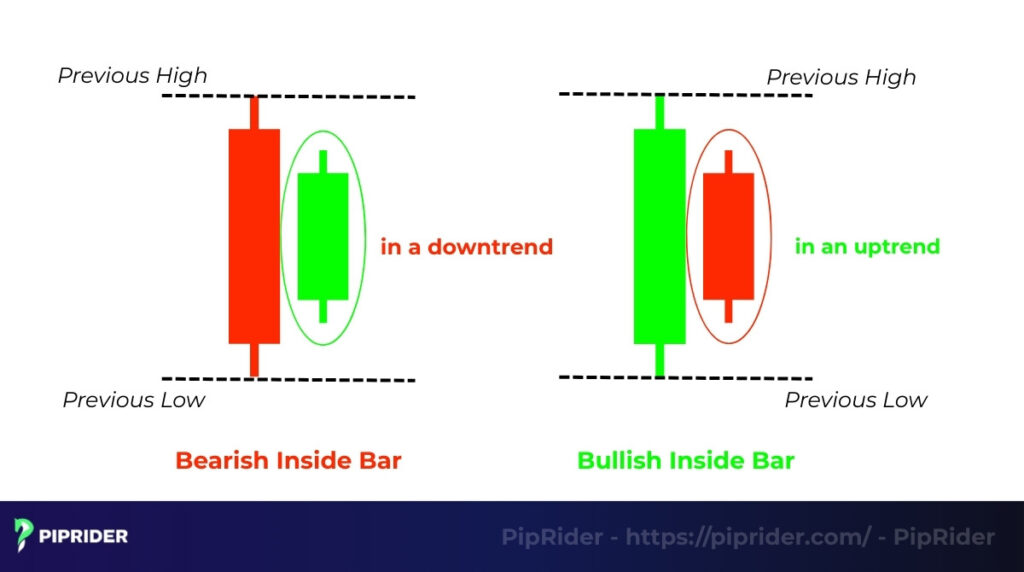
- A Bullish inside bar setup is confirmed when the price breaks and closes above the high of the preceding candle. This signals that the period of indecision has resolved to the upside, and buyers have taken control.
- A Bearish setup is confirmed when the price breaks and closes below the low of the preceding candle. This signals that the indecision has resolved to the downside, and sellers are in control.
2.2. Valid Conditions (Range, Volume, Context)
Not all patterns are created equal. To be considered a promising trading setup, a valid setup should meet several conditions related to its structure, the market context, and trading volume.
- Tight Range: A high-quality inside bar should be significantly smaller than its preceding candle. A very small or “tight” pattern shows a strong buildup of energy, often leading to a more explosive break.
- Decreasing Volume: Ideally, the volume during the inside bar’s formation should be lower than the volume of the Mother Bar. This indicates a genuine pause or “rest” in the market, rather than active opposition from the other side.
- Key Context/Location: This is the most important condition. A pattern is most powerful when it forms at a significant chart level, such as:
- During a pullback to a major support/resistance in a trending market (a continuation signal).
- At the peak or trough of a large swing, potentially signaling a reversal.
- After a strong impulse move, signaling a brief pause before the trend continues.
2.3. Best Time Frames for Spotting Inside Bars
This pattern is most reliable on higher timeframes. From our experience, the daily and 4-hour charts provide the most trustworthy signals because they filter out insignificant market “noise.”
A break from a daily inside bar is more significant and likely to lead to a sustained move, especially when it aligns with major reversal formations such as a triple top. We advise caution on charts below 1-hour, as they are prone to false moves.
Read more:
How To Trade Bearish Shooting Star Candlestick Pattern?
3. Common Inside Bar Variations
Once you can spot a basic inside bar, you’ll start to notice several common variations. Understanding these advanced patterns can provide even more insight into market psychology.
- Double Inside Bars
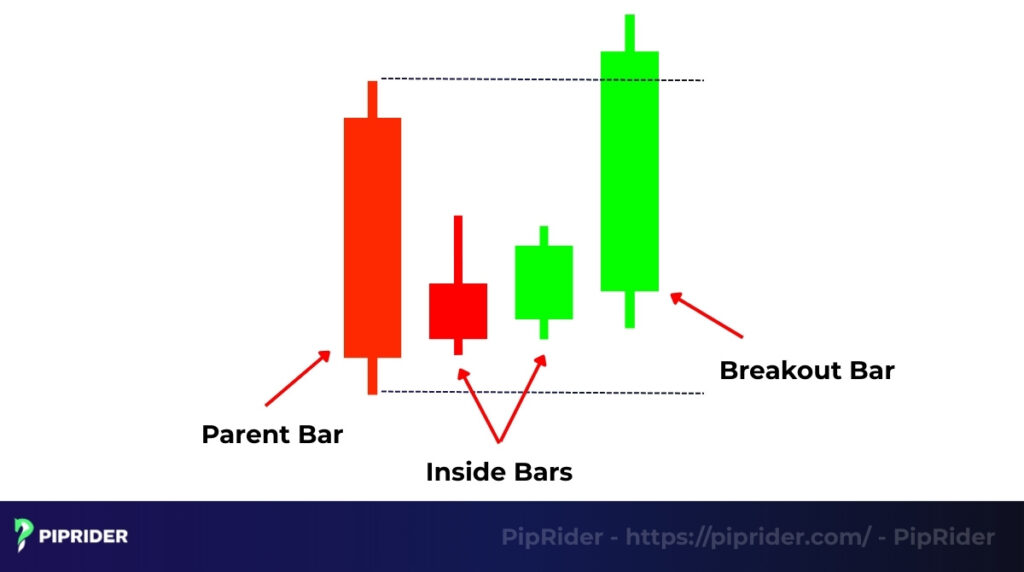
This occurs when two inside bars form consecutively within the same Mother Bar. It signals an extreme period of tight range and a very tight coiling of energy. A break from a double inside bar setup is often very explosive.
- The Fakeout (The “Fakey”)
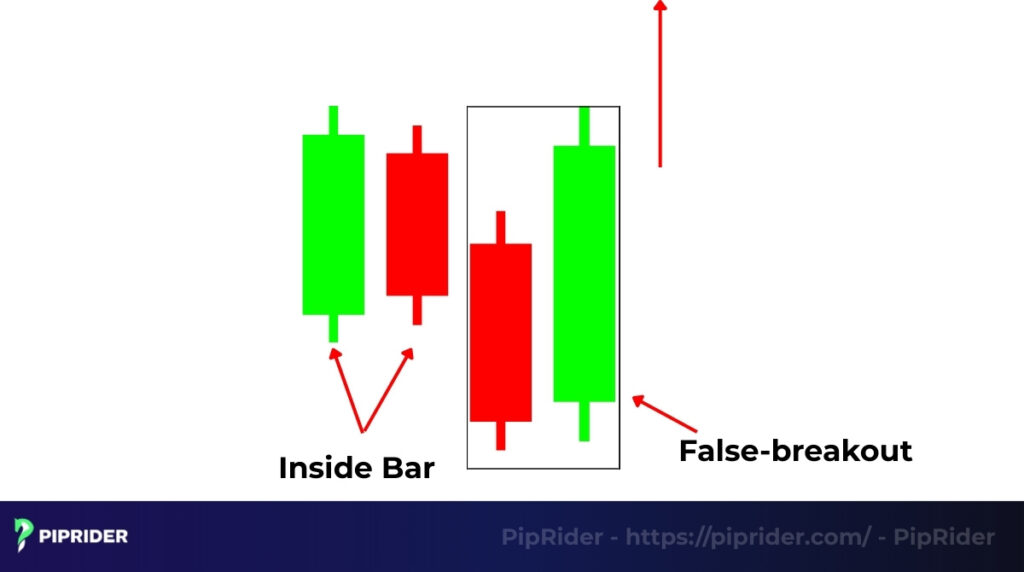
The Fakeout, also known as a “Fakey”, is a powerful reversal signal. It occurs when the price first makes a move in one direction from an inside bar, only to quickly reverse and move in the opposite direction, trapping traders who entered the initial move.
4. How to Trade Inside Bars: A Step-by-Step Guide
The inside bar trading strategy is not about predicting the direction but about reacting to the subsequent breakout. Proper risk management is the core of any strategy, and it begins with using the Mother Bar’s range as the decision point. This guide breaks down the process into a clear, systematic approach.
4.1. Entry Strategy: Conservative vs. Aggressive
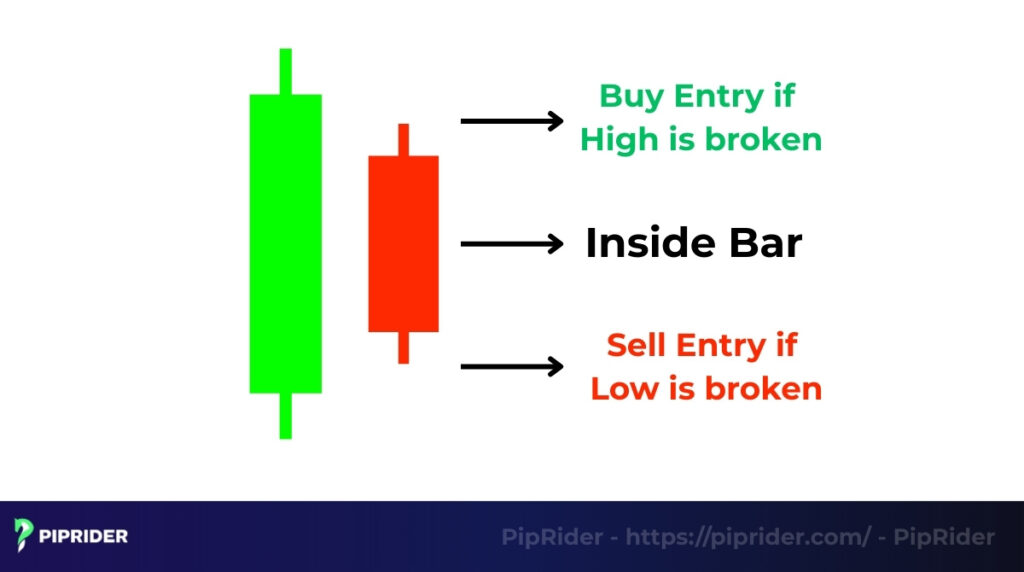
There are two primary entry options for high-probability entries, each with a different risk profile:
- Conservative Entry (Breakout): A trader waits for the price to break and close outside the preceding candle’s range. An entry is placed above the top for a long trade, or below the bottom for a short trade. This method waits for market confirmation.
- Aggressive Entry (Early): A trader enters within the inside bar’s range, anticipating the direction of the break. An early entry offers a better price but carries a higher risk of a failed break.
4.2. Stop Loss Placement
The rule for placing a stop loss is simple and objective: it is always placed on the opposite side of the breakout from the Mother Bar.
- For a long (buy) trade, the stop loss goes a few pips below the bottom of the candle.
- For a short (sell) trade, the stop loss goes a few pips above the top of the candle.
This ensures that if the break fails and the price completely reverses, your position is closed for a defined and manageable loss.
4.3. Risk/Reward Ratio and Take Profit
An inside bar setup often provides an excellent Risk/Reward ratio because the risk (the height of the preceding candle) is clearly defined. The clear stop loss level makes it easy to calculate your potential loss before entering a trade. A common take-profit strategy is to target a minimum 1:2 or 1:3 risk/reward, or to aim for the next key support or resistance.
4.4. Trend Continuation Signal
This is the most common and reliable way to use the pattern. In a strong market trend, an inside bar forms during a shallow pullback. A breakout above the Mother Bar is a trustworthy continuation signal to join the trend. The opposite is true in a downtrend.
4.5. Reversal Signal
This pattern can also signal a reversal when it forms at a major support or resistance level after a long, extended trend. A break against the previous trend from one of these key levels can indicate a significant shift in the market.
Real-World Trade Example:
The Setup: Imagine the daily chart of Apple (AAPL) is in a strong uptrend. The stock pulls back to its 50-day moving average and forms a clear inside bar, signaling a pause.
The Trade Plan: An entry order is placed just above the preceding candle’s top, with a stop loss set just below its bottom. The target is the next supply zone.
The Outcome: The price makes a move the next day, triggering the entry, and continues with the primary uptrend to hit the profit target.
Read more:
Pin Bar Candle in Trading: How to Identify, Interpret and Trade It
5. Common Mistakes to Avoid
While the inside bar is a powerful pattern, traders often make a few recurring mistakes that can lead to losses. Being aware of these common pitfalls is essential for consistent trading.
A critical error is ignoring the overall market context. An inside bar that forms as a continuation signal in a strong, established trend is a much higher-probability setup than one that forms in the middle of a choppy, directionless market. Similarly, in low-liquidity markets, a pattern can simply mean a lack of market interest, not a buildup of energy, often leading to failed moves.
Other common mistakes include:
- Confusing with general consolidation: It is a specific, two-candle pattern signaling a brief pause, not a prolonged sideways range.
- Falling for the false breakout: The most common trap is the Fakey. Always wait for a strong candle close as confirmation to reduce this risk.
- Overtrading: Because they can appear frequently, it’s easy to overtrade them. Only focus on inside bars that form at key, reliable locations.
6. Example Scanners and Tools for Inside Bar Strategy
Manually searching for inside bar patterns across hundreds of markets can be time-consuming. Fortunately, traders can use scanners to automate the process and other indicators to confirm the setups, creating a more efficient strategy.
6.1. Scanners and Alerts
Most modern trading platforms, including TradingView, MT4, and Thinkorswim, have built-in or custom scanners that can automatically find candlestick patterns across your favorite markets.
You can typically set the scanner to look for stocks or forex pairs that have formed a valid inside bar on your preferred timeframe (e.g., the daily chart). Many platforms also allow you to set up the alerts so you are notified in real-time when a potential setup occurs, ensuring you don’t miss an opportunity.
6.2. Combining with Moving Averages or RSI
As a confirmation tool, indicators are invaluable. Combining the inside bar with other signals creates a much higher-probability setup.
- Moving Averages: An inside bar that forms during a pullback to a key moving average (like the 50 EMA) in a strong trend is a classic and highly reliable continuation signal.
- RSI (Relative Strength Index): If a bullish inside bar forms at a major support level while the RSI is simultaneously in “oversold” territory (below 30) or showing bullish divergence, it adds significant weight to the potential for a reversal.
7. Comparing with Other Price Action Patterns
Understanding how the inside bar relates to other key patterns will significantly deepen your chart reading skills.
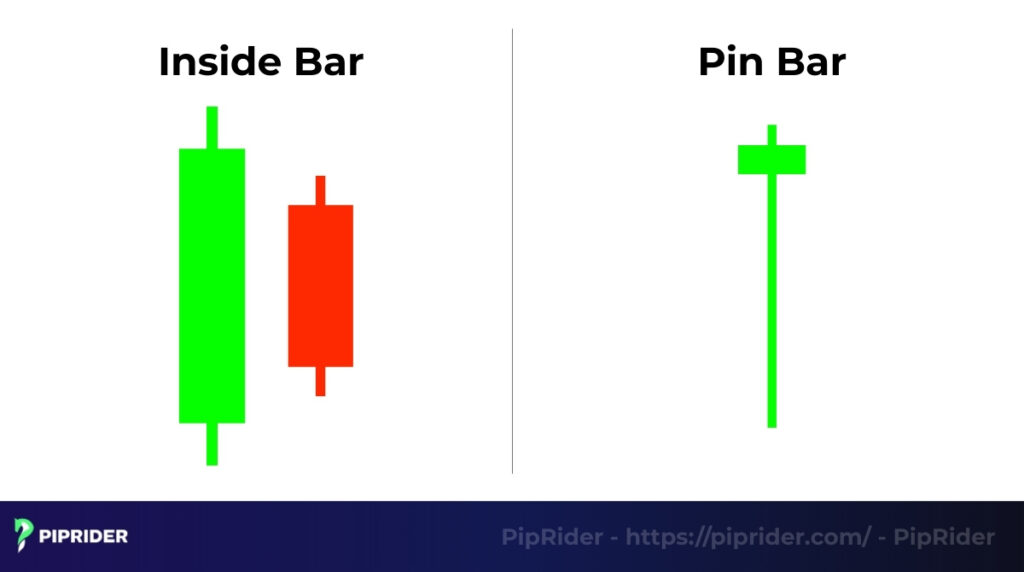
- Vs. Pin Bar: These patterns tell opposite stories. The first signals indecision and a pause in the market. The second, with its long rejecting wick, signals a decisive rejection of a price level.
- Vs. Engulfing Bar: These are also opposites. An inside bar represents a contraction in volatility (market getting quiet). An Engulfing Bar, where a large candle completely swallows the previous one, shows an expansion in volatility (market getting loud).
- The Inside Bar + Pin Bar Combo Strategy is a powerful, advanced setup that occurs when the inside bar is also a pin bar. This combo pattern shows both a period of indecision and strong price rejection happening at the same time, often signaling a very strong break.
Which Pattern Is More Reliable?
No single pattern is universally “more reliable”. Its trustworthiness always depends on the market context. An inside pattern in a strong trend offers a stronger signal than a pin pattern against it. A pin pattern at a major weekly demand zone proves to be a more effective setup than an inside pattern in a choppy range. The key lies in trading patterns that align with other confirming factors.
8. Frequently Asked Questions (FAQs)
9. Conclusion
In conclusion, the inside bars pattern is a powerful and versatile tool in a price action trader’s arsenal. It provides a clear signal of market indecision, often preceding a significant break.
While a simple pattern, its reliability increases dramatically when combined with other confirming factors, such as key support/resistance levels, indicators, or multi-timeframe analysis.
The key to success is practice. We strongly advise traders to thoroughly test any strategy on a demo account and maintain a detailed trade journal to track performance before risking real capital. To continue developing your chart reading skills, we encourage you to explore more in-depth guides in our Forex Chart Patterns category on Piprider.


